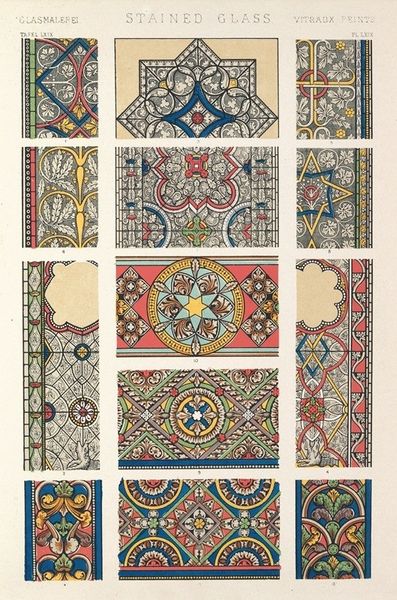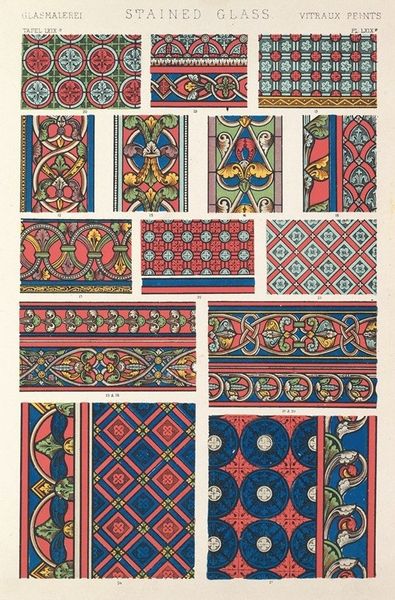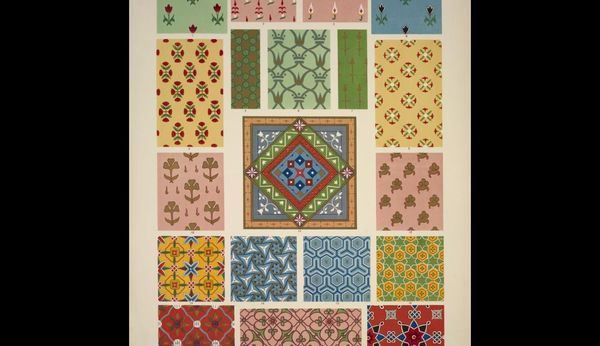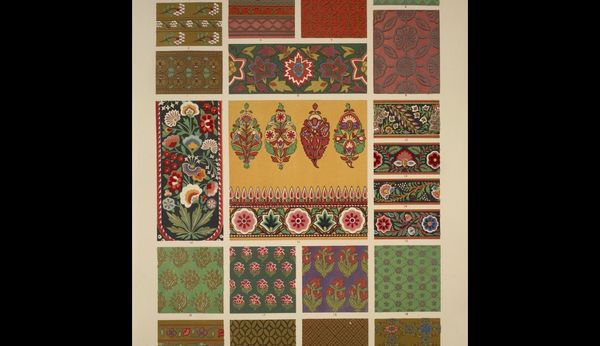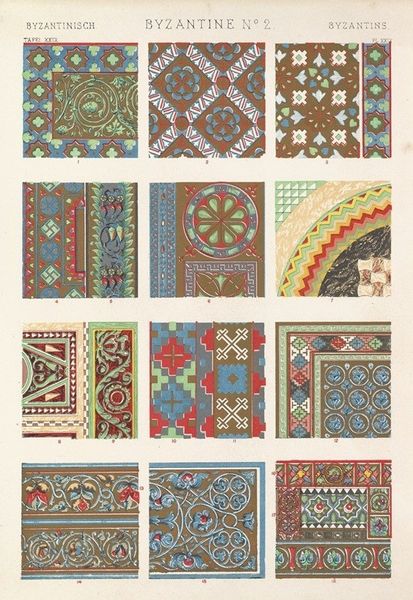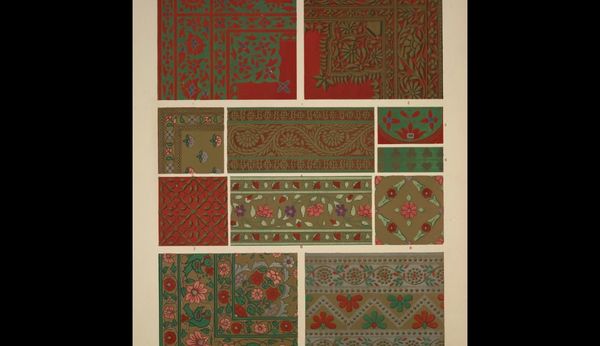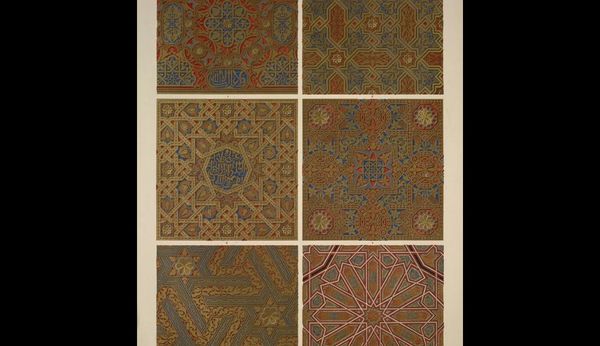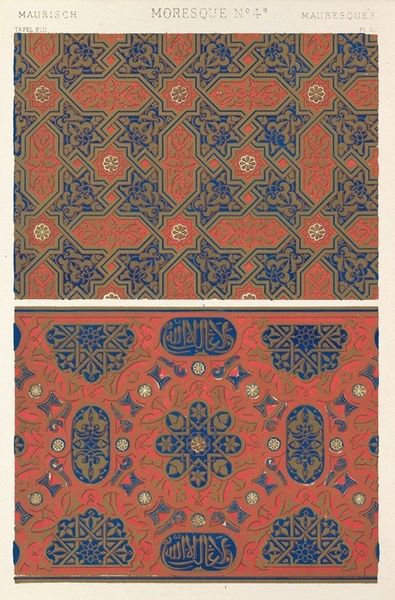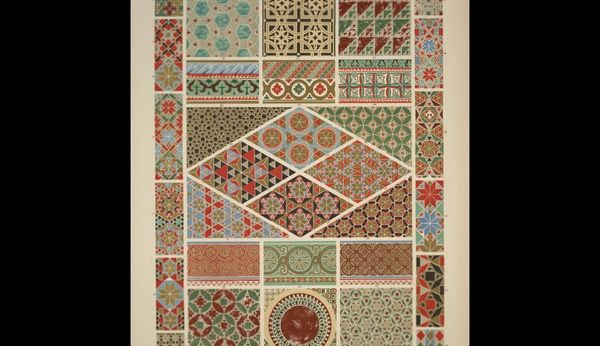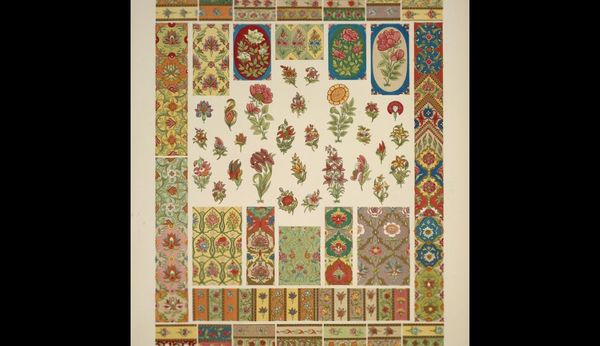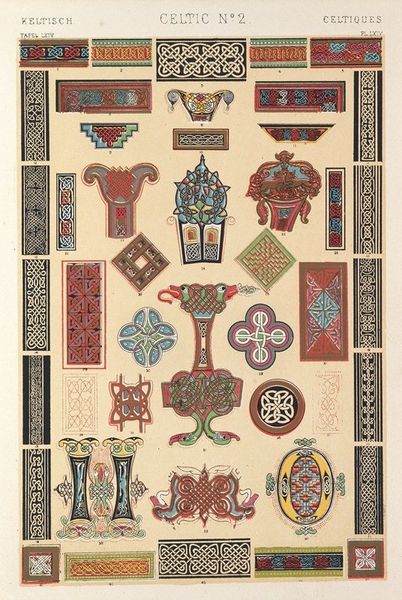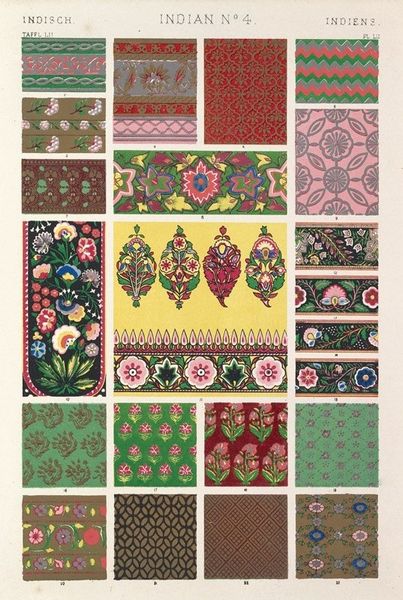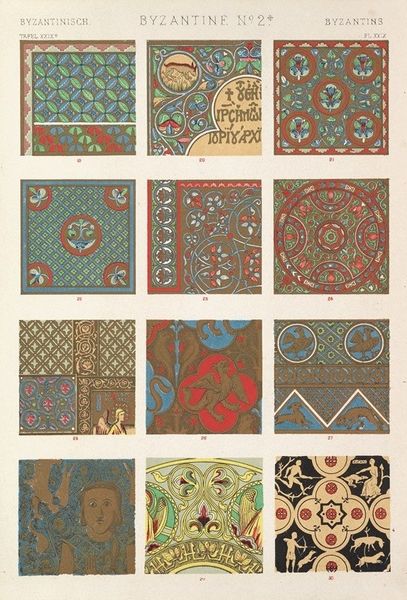
drawing, print
#
drawing
#
medieval
# print
#
pattern
#
geometric pattern
#
geometric
#
geometric-abstraction
#
decorative-art
Copyright: Public domain
Curator: Right now we are looking at "Medieval Ornament no. 4. Stained glass of various periods", a print by Owen Jones featuring several rows of different ornament designs. What’s your immediate reaction? Editor: My first impression is order—a very intricate, visually arresting order. There’s something comforting in the way the patterns repeat, although I confess some designs speak to me more than others. I find my eye gravitating to the intersections of color. Curator: It's an astute observation. The deployment of geometric and floral elements is quite sophisticated. Note how Jones has distilled complex forms into seemingly simple shapes. Observe also how he organizes them on the page itself; each panel stands as an isolated moment and as an element within the overarching, complex grid. The chromatic relationships between each sample invite semiotic interpretation, speaking of symbolic cohesion. Editor: Precisely, it is very compelling, though I'm thinking about the context in which it was made. These are clearly designs meant to be reproduced in stained glass. The work that went into creating one stained-glass panel in a medieval cathedral was staggering: from blowing the glass itself and mixing pigments to applying each individual piece and fitting them into the frame, secured with lead strips. Each ornament therefore signifies hours upon hours of collective labour. Curator: Yes, it invokes craftsmanship. It does beg the question, though, of its status as "art". It's hard to separate function from form here. We could argue, from a purely structural standpoint, that each design is essentially an exploration of pattern and symmetry—a kind of visual language, reduced to its basic elements. Editor: That may be true, and although the end product appears ordered and harmonious, one cannot undermine all the stages required. To focus solely on the arrangement on the page risks overlooking how it reflects specific knowledge, skill, and purpose that went into stained glass construction. The patterns remind us of the pre-industrial, or artisanal origins. Curator: A valid counterpoint. Thinking about that broader history really reframes how we consider not just these images but how medieval aesthetics pervaded all aspects of the built world. Editor: Yes, these designs exemplify a kind of democratization of pattern – available to all in one printed sheet. It highlights a particular moment in the movement from medieval workshops to mass reproducibility.
Comments
No comments
Be the first to comment and join the conversation on the ultimate creative platform.
